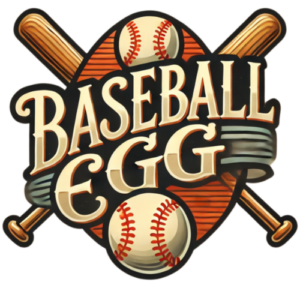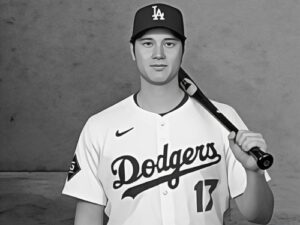One of the annoying things you’ll hear people say when they argue about the Hall of Fame is this:
“So and so is a Hall of Famer. He just is!”
Emphasis not added: people will shout this type of thing.
But of course that’s silly. Saying something does not make it so. A Hall of Famer is not something you can fit into one check box. Some Hall of Famers are all-time legends, some are superstars for a short time, and others play long, impactful careers. There are different types of Hall of Famers.
One way to evaluate Hall of Fame candidates it is to see how a player’s best seasons stack up against existing Hall of Famers, other candidates, and even active players. This can be done many ways, but WAR (Wins Above Replacement) makes it very easy to rate seasons.
What is Greatness Score?
For Greatness Score we count all of a player’s seasons of 4 WAR or higher. We assign point values to each season. This is how:
4 WAR season is worth 4 points
5 WAR season is worth 6 points
6 WAR season is worth 8 points
7 WAR season is worth 10 points
8 WAR season is worth 12 points
9 WAR season is worth 16 points
10 WAR season is worth 20 points
A 4-WAR and 5-WAR season is considered All-Star worthy. A 6-WAR season is superb. When you get into 7-WAR territory, you’re typically an MVP contender.
A WAR season of 8+ is noteworthy: fewer than 375 such seasons have occurred in baseball history since 1869. Only 26 players have ever reached 10 WAR in a single season (position players).
Why a point system, rather simply adding the WAR from each year? Well, because we believe a 6-WAR season is more than 2 increments better than a 4-WAR season. As the Wins Above Replacement number goes over 5, it gets much more important. An 8-WAR season is more than double the value of a 4-WAR season. So, we rate it as 3X as important. We think the rarity of seasons as you move up the scale proves that.
Once you do the factoring, we come up with the GREATNESS SCORE. A figure that shows us how much value a player provided in great seasons.
How Can You Use Greatness Score?
Greatness Score is useful for classifying Hall of Famers to see how they put together their credentials.
Some players are very top heavy: they have great, superstar MVP quality seasons, and not many average seasons. These guys, like Babe Ruth, Willie Mays, and future HOFer Albert Pujols, are legends, and the Greatness Score merely serves as a rubber stamp for their Cooperstown credentials.
There are players who have superb careers and a few outstanding seasons too. Again, these are no-brainers when it comes to Cooperstown. Players in this category include Charlie Gehringer, Al Kaline, and Andre Dawson.
But other players have a different career pattern. Some are accumulators, guys who have lots of All-Star caliber seasons but not many top-shelf years. A classic example of this among position players is outfielder Sam Crawford, who never had a season with as much as 7 WAR. But Wahoo Sam had 11 seasons where he had 4 or 5 WAR, and one where he had 6 WAR. That’s a quintessential example of a player who forged a long, successful career, but was not elite at his peak. Lou Whitaker was also like that, and to list another example of a recent player, Jim Edmonds had a fine career but never had a 7-WAR or higher season.
There’s nothing wrong with Sam Crawford having a plaque. The man had nearly 3,000 hits, and he holds the all-time record in triples, and helped the Tigers win three consecutive pennants. The Hall of Fame should have room for fine players like Crawford and Paul Molitor (who also never had a 7-WAR season).
With these distinctions, we arrive at three levels for the Hall: Level I (the elite legends), Level II (the all-time greats), and Level III (the stars). Most players who have been elected fit nicely in one of those categories, with a few exceptions.
[table “” not found /]Where Greatness Score can really be helpful is when you compare players at the same position.
Evaluating First Basemen for the Hall of Fame
Let’s dive in, starting with first basemen, where there are several popular candidates for the Hall of Fame on the ballot and in the discussion annually.
[table “” not found /]The elite rate where you’d think they would, and all the way down to Frank Thomas (with a Greatness Score of 70) you see legit Cooperstown club members.
Once you get to George Sisler, you reach a section of players who are lesser Hall of Famers (at least not considered elite), and top candidates. A few comments:
Big Jawn Mize
People don’t realize how great Johnny Mize was. That’s because he began his career when FDR was president. But Mize was basically a left-handed version of Frank Thomas: he won a batting title, he led the league in home runs four times (twice in his mid-20s and twice in his mid-30s), and he walked a lot, didn’t strike out much, and scared the bejeezus out of opposing pitchers. Mize also missed three full seasons while serving in World War II, which kept him from reaching 450, and maybe even 500 homers. He is underappreciated.
Todd Helton
Todd Helton has a better greatness score than Willie McCovey, Jim Thome, Eddie Murray, and Harmon Killebrew, four first basemen that most people accept without a gripe. Helton played 17 seasons and had more than 2,500 hits, so he’s not just a high-peak guy, he has some great numbers. He’s a 300/400/500 guy too (batting average/on-base/slugging), which shows the versatility of his contribution with the bat. In his three years on the ballot, Helton has crept from 16 percent to 29 percent. He should build on his momentum this time, since the ballot is not very top heavy.
Dick Allen
The misunderstood Dick Allen was greater than Eddie Murray or Tony Perez, but he didn’t have their longevity, nor their successful credentials as part of winning teams. There really has never been a first baseman elected with Allen’s type of career: high peak but not much in the way of filler.
If Mattingly, why Not Olerud?
If Don Mattingly is a Hall of Famer, wouldn’t Greatness Score show it? Yet, Donnie Baseball rates below John Olerud, Fred McGriff and even Mark Teixeira. All three of those players were able to play and stay healthy. It seems Mattingly will have a very difficult time getting via a veterans committee.
But didn’t Garvey look like a Hall of Famer?
While he did many things that made him famous during his playing career, Steve Garvey would be an idiosyncratic selection for the Hall of Fame, sort of like Harold Baines. Garvey seemed great when we watched him play, but WAR doesn’t like him.
Tony Perez vs. Fred McGriff
As I have argued before, Fred McGriff was just as valuable as Tony Perez, even if the narrative didn’t make it seem like it. The former is not in the Hall, and Perez is. But that’s a mistake.
Second Base Has Many Excellent Candidates
[table “” not found /]The Best Candidate: Mr. Grich
Bobby Grich should not only be elected to the Hall of Fame, but someone should send him an apology. He clearly rates among many of the greatest second basemen of all-time. He’s comparable to Frankie Frisch and Rod Carew in terms of great seasons, and while those men filled out their careers with more milestones and average seasons, Grich is just too far above the line to be ignored.
Sweet Lou
The Hall of Fame case for Lou Whitaker rests almost solely on his steady, All-Star caliber consistency and longevity. He is a textbook case of a Level III HOFer. Whitaker had ten seasons between 4 and 6 WAR, which means he had many really good seasons.
But Sweet Lou never had that knock-you-off-your-feet season in the sun. To compare him to his longtime double play partner: Sweet Lou never had an MVP-type breakout year like Alan Trammell did. That’s the big knock against Lou, and why he remains controversial.
Kinsler and Pedroia
Whitaker’s long-tail career is impressive, and I think he’ll be elected soon. But, it’s interesting to see Ian Kinsler and Willie Randolph rank above or nearly equal to Whitaker in greatness. Of course, neither of those other two second basemen played as long or had as many solid seasons below the “great dividing line” as the Detroit second baseman did.
I think most people would reflexively believe that Pedroia was the greater player, but Kinsler, who was practically his exact contemporary and played in the same league too, was just as good, if not better than the Boston middle infielder.
Mad Dog’s Favorite Candidate: Jeff Kent
Greatness Score reveals that Jeff Kent’s candidacy rests on his home run total and one MVP season. Clearly, Kent did not have enough “great” seasons to be a high peak candidate like Ryne Sandberg. Heck, Kent had eight seasons where his WAR was under 3(!). That means he was an all-or-nothing player. So far, his mixed bag of credentials (and his ornery personality) have not convinced enough writers to vote for him.






